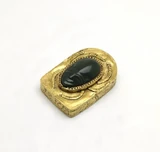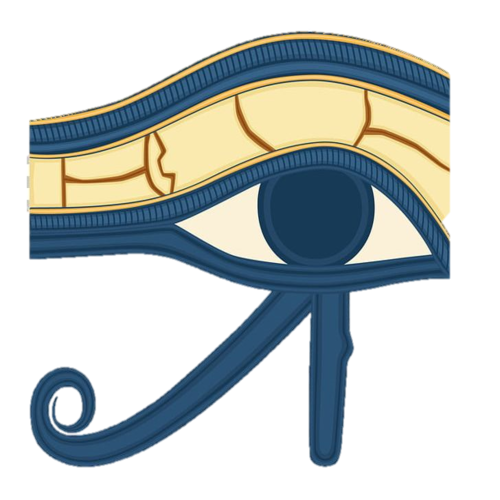For more images see: Scarab Image Gallery
Scarabs were popular amulets and impression seals in ancient Egypt. They survive in large numbers and, through their inscriptions and typology, they are an important source of information for archaeologists and historians of the ancient world. They also represent a significant body of ancient art.
For reasons that are not clear (although likely connected to the religious significance of the Egyptian god Khepri), amulets in the form of scarab beetles had become enormously popular in Ancient Egypt by the early Middle Kingdom (approx. 2000 BCE) and remained popular for the rest of the pharaonic period and beyond. During that long period the function of scarabs repeatedly changed. Primarily amulets, they were also inscribed for use as personal or administrative seals or were incorporated into jewelry. Some scarabs were created for political or diplomatic purposes to commemorate or advertise royal achievements. By the early New Kingdom, heart scarabs had become part of the battery of amulets protecting mummies.
Funerary scarabs[]
Although scarab amulets were sometimes placed in tombs as part of the deceased's personal effects or as jewelry, generally they have no particular association with ancient Egyptian funerary practices. There are, however, three types of specifically funerary scarabs, heart scarabs, pectoral scarabs and naturalistic scarabs.

Heart Scarab of Sobekemsaf II
Heart scarabs were placed within the graves of wealthy people so that they may have a greater chance of reaching the Afterlife. They seem to start to be used from the Thirteenth Dynasty. When reading the Book of the Dead it is stated that they must be made of a stone known as Nemehef.
These scarabs were inscribed with Chapter 30 of the Book of the Dead so that their heart would not speak against them during the Weighing of the Heart Ceremony.[1]
The spell says:[2]
- O my heart which I had from my mother, O my heart which I had upon this earth, do not rise against me as a witness in the presence of the Lord of Things, do not speak against me concerning what I have done, do not bring up anything against me in the presence of the Great God, Lord of the West.
- Hail to you, my heart! Hail to you, my heart! Hail to you, my entrails! Hail to you, you gods who are at the head of those who wear the sidelock, who lean on their staffs! May you say what is good to Ra, may you make me flourish, may powers be bestowed when I go forth, having been interred amongst the great ones who long endure upon earth.
- Not dying in the West, but becoming a spirit in it.
References[]
- ↑ Oakes, L & Gahlin, L. (2005) Ancient Egypt: An illustrated reference to the myths,, religions, pyramids and temples of the land of the Pharaohs London: Hermes House. ISBN 1843094290
- ↑ Faulkner, R, O. The Ancient Egyptian Book of the Dead (1996). ISBN 0-7141-0946-0.
